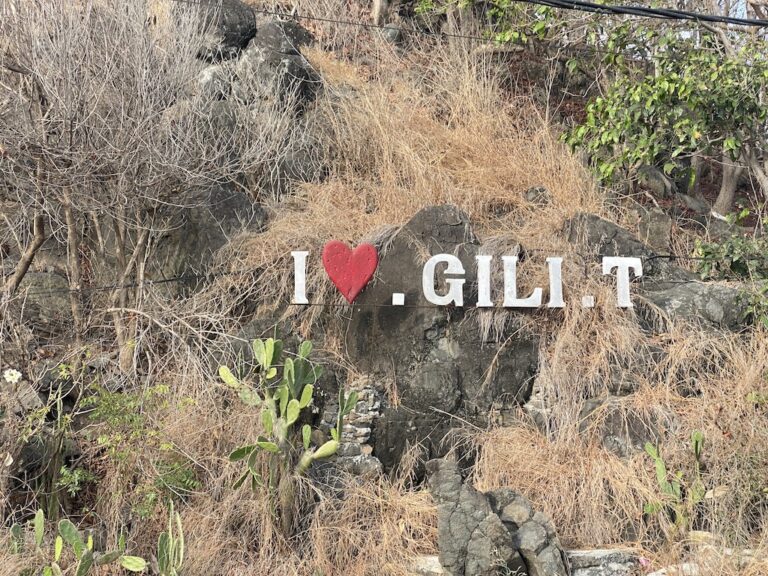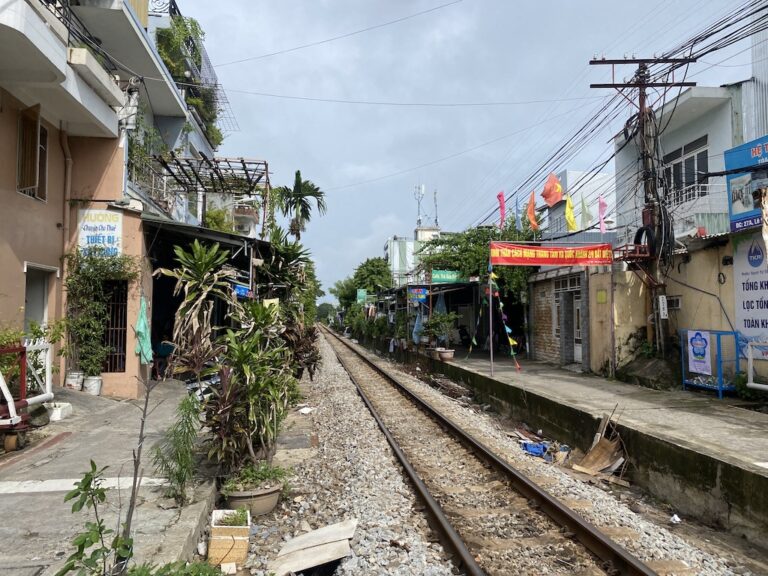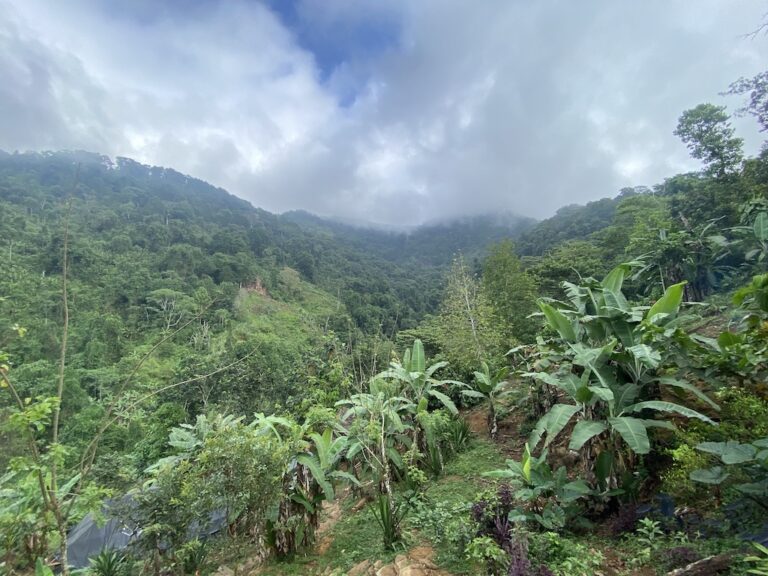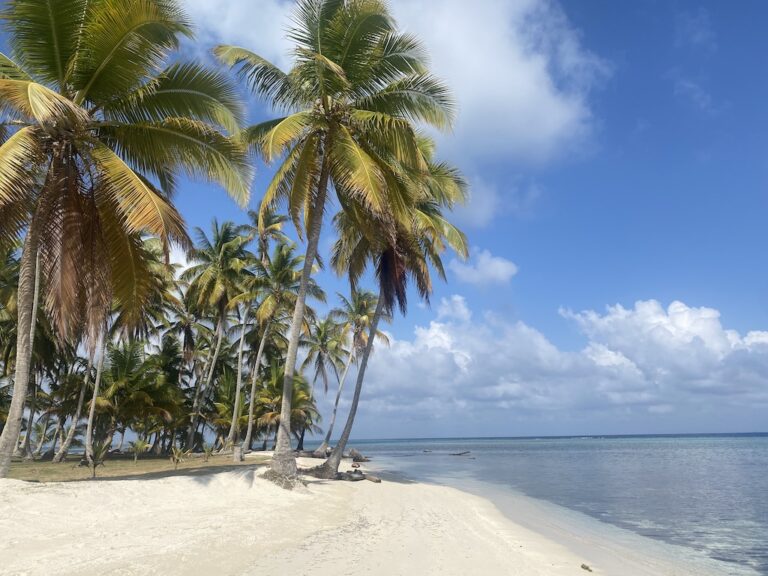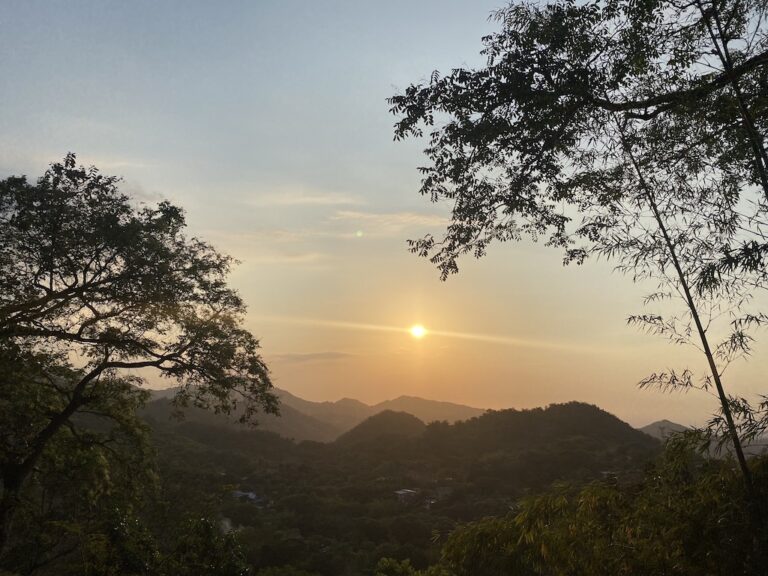The complete guide to visiting Tayrona National Park, Colombia
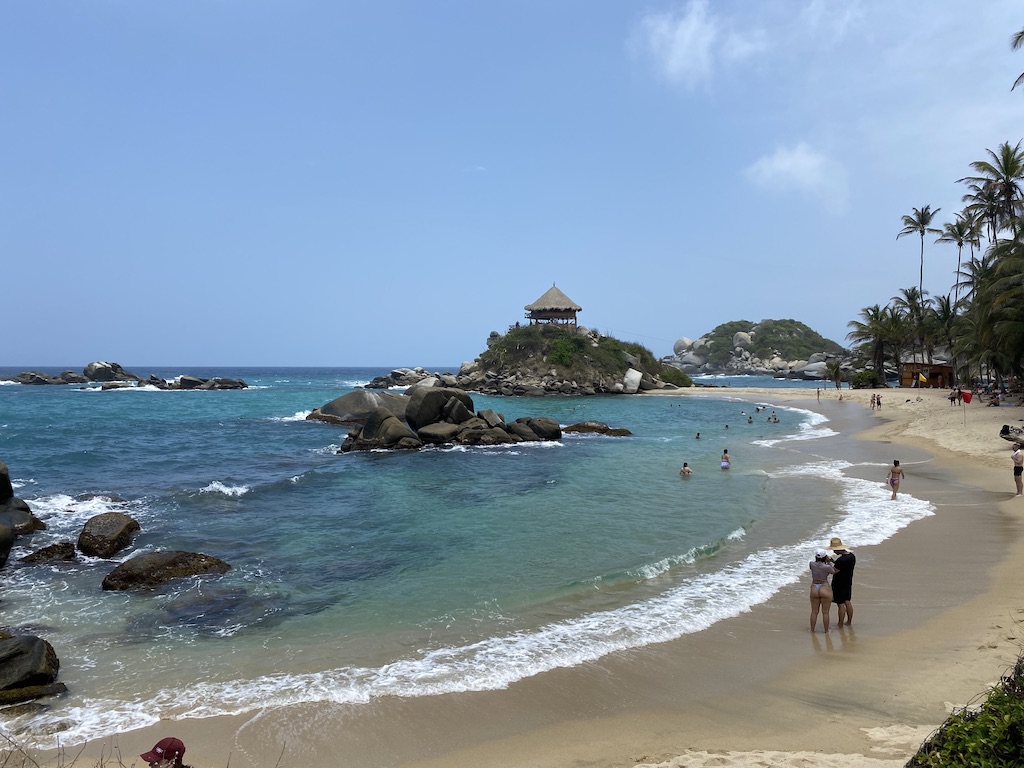
Tayrona National Park has it all: pretty beaches, lush jungle, palm trees and wildlife. Therefore, it’s no surprise that this national park is a popular tourist destination, both for domestic and international tourists alike!
Before my trip, I thought visiting Tayrona National Park would be super complicated. However, that isn’t the case – although you’ll need to do some forward planning, visiting the park is simpler than it initially looks.
In this guide I’ll give you more information about the park based on my own visit, to give you more understanding of how everything works. I hope it helps you to plan your own trip!
Ratings
Accessibility: 2/5 • Safety: 4/5 • Enjoyment: 4/5 • Value: 3/5 • Overall: 3.25/5
What is Tayrona National Park?
Parque Nacional Natural Tayrona – or Tayrona National Park in English – is a protected area on Colombia’s Caribbean coast. Sandwiched between the sea and the Sierra Nevada mountain range, yet only 45 minutes’ drive from Santa Marta (the nearest city), the park is surprisingly accessible and interesting to domestic holidaymakers and backpackers alike.
At 150 km2, the majority of the park comprises jungle, with both wet and dry forest present. Along its boundary, there are a range of pretty beaches. Some are long and rough so aren’t suitable for swimming, whilst others form coves, making for gentler, more tranquil waters. It’s the latter beaches that attract the most attention.
Some of the beaches, in the west of the park, are so remote that they cannot publicly be accessed by land – only by boat. I haven’t visited these beaches so I won’t discuss them further in this article! You can find plenty of tours to Playa Cristal and its nearby beaches departing from Santa Marta.
There are also beaches in the east of the park, which tourists can access via trails which can be walked or hiked (depending on the path chosen). These include Cabo San Juan, La Piscina and Playa Brava. These are the beaches I’ll be focussing on within this article!
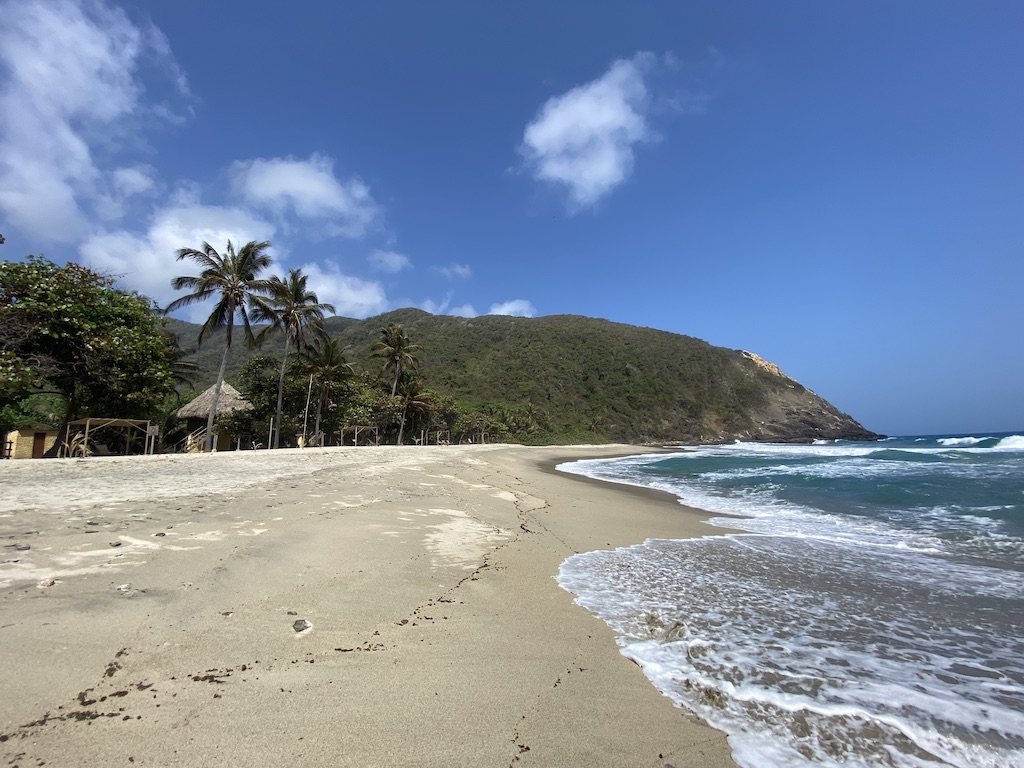
The draw of the jungle
One thing I felt on my visit was that the walk to the beaches was overlooked by many visitors, in favour of the beaches themselves.
I partly understand this. Cabo San Juan, the most popular beach, is beautiful, but it gets very busy during peak times. If you’re looking to grab a great spot or experience it when it is quiet, getting there early is key – but that can mean rushing the trail to get there.
However, the jungle at Tayrona National Park is stunning and incredibly alive. You can see an array of wildlife without veering off the footpath. We saw capuchin monkeys within ten minutes of beginning our walk through the Park!
Tayrona is also home to many other pretty organisms, like butterflies, snakes, sloths and even jaguars. Some you’d have to be very lucky to see – but there’s no doubt you’ll spot something during your visit. We saw so many lizards and got distracted by them every time…
Indigenous roots
The Sierra Nevada mountain range and the surrounding rainforest are made all the more enchanting by its inhabitants. The area is the ancestral home for four indigenous groups – Kankuamo, Kogui, Wiwa and Arhuaco – who have long roots in the area.
Members of the community live in Tayrona National Park, most notably in the town of Pueblito, located close to the track between Calabazo and Cabo San Juan. They also own and work in the establishments in the park. Therefore, you may see members of the community during your visit.
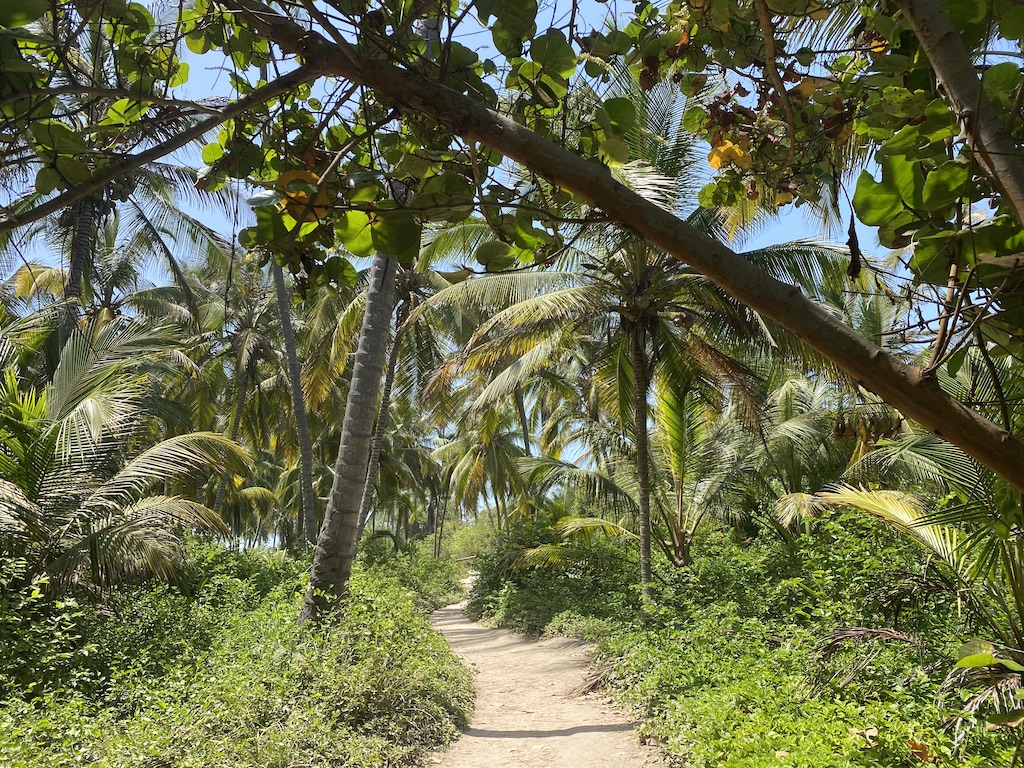
How to enter the park
If you visit Tayrona National Park by foot, you have the option of two entrance points. At both, you’ll have to pay an entry fee and will be given a wristband.
El Zaino entrance
The most popular official entrance is El Zaino. You’ll find this in the far east of the park, nearest to the best beaches. It’s the most accessible option for visiting, with the easiest footpaths in this area of the park.
Before we arrived, we’d been warned that the El Zaino entrance gets very busy and that we should arrive by 8 am, or we’d be facing queues of over one hour. Therefore, we decided to leave our hostel in Palomino super early. However, the bus took longer than expected and we didn’t make it to the entrance until 8:30 am – I was pretty worried.
But I had no need to be! We got through in less than five minutes and didn’t even need to queue to buy our ticket. How much of this is down to our visit being timed over the Easter weekend, I don’t know; but it was much more relaxed than I expected.
Calabazo entrance
Calabazo is a much quieter entrance than El Zaino. However, it is used as the access point for several villages within the park, so the first hour of the walk is uphill, along a dirt road also used for motortaxis. I wouldn’t recommend taking this entrance without a reasonable level of fitness or if you have little time available; the route from El Zaino is just easier and nicer.
Just to note: from the official website and other blogs, Calabazo is made to sound like a secret entrance with restricted access to Cabo San Juan. As of April 2023, you can walk from Calabazo to Cabo San Juan. A town between them – Pueblito – is closed for visitors, but you can still use the footpath to Cabo San Juan. Don’t let that be a worry for you!

How much does Tayrona National Park cost?
Do you have to pay an entrance fee?
To enter Tayrona National Park, you have to pay an entrance fee. As of January 2024, the price of this is 62,000 COP ($16 / £12) in low season and 73,500 COP ($18 / £14) in high season.
Overall, for Colombian standards, this is a little pricey. I’d still say that it’s worth it, even on a day trip, although it’ll work out better value per day if you stay overnight.
There’s also a second compulsory charge for health insurance whilst you’re in the park. I know, it’s pretty annoying if you already (hopefully) have your own insurance, but it’s a mandatory charge. The price of this is 6000 COP per day ($1.50 / £1.20).
In El Zaino, you’ll need to queue up first to purchase medical insurance, before you pay for your ticket. You can pay for the entrance fee by card without an additional percent fee added on top.
To get from El Zaino to the trailhead, there’s a longish dirt track you have to go through. As it’s pretty uninspiring, do yourself a favour and get the shuttle bus, which is 5000 COP ($1.30 / £1) per person per way.
How much does food and drink cost?
In the park itself, prices for food, drink and accommodation are inflated. The high demand compared with supply, as well as the added cost of having to transport goods in by boat or mule, has driven up costs compared to the surrounding area. Depending on the establishment, expect to pay:
- 6000 to 10,000 COP ($1.50 to $2.50 / £1.20 to £2) for a beer;
- 35,000 to 40,000 COP ($9 to $10 / £7 to £8) for a main course; and
- 10,000 to 12,000 COP ($2.50 to $3 / £2 to £2.40) for a juice.
For a couple of days, we found them to be a bit too high for comfort, but ultimately not unaffordable given the circumstances. If you’re a particularly snacky person or are looking to save a bit of money, I’d suggest bringing food in to reduce your expenses.
As for accommodation, we payed 30,000 COP ($8 / £7) each for a hammock both nights we were in the Park. A hammock isn’t glamorous, but we could accept that for the price!
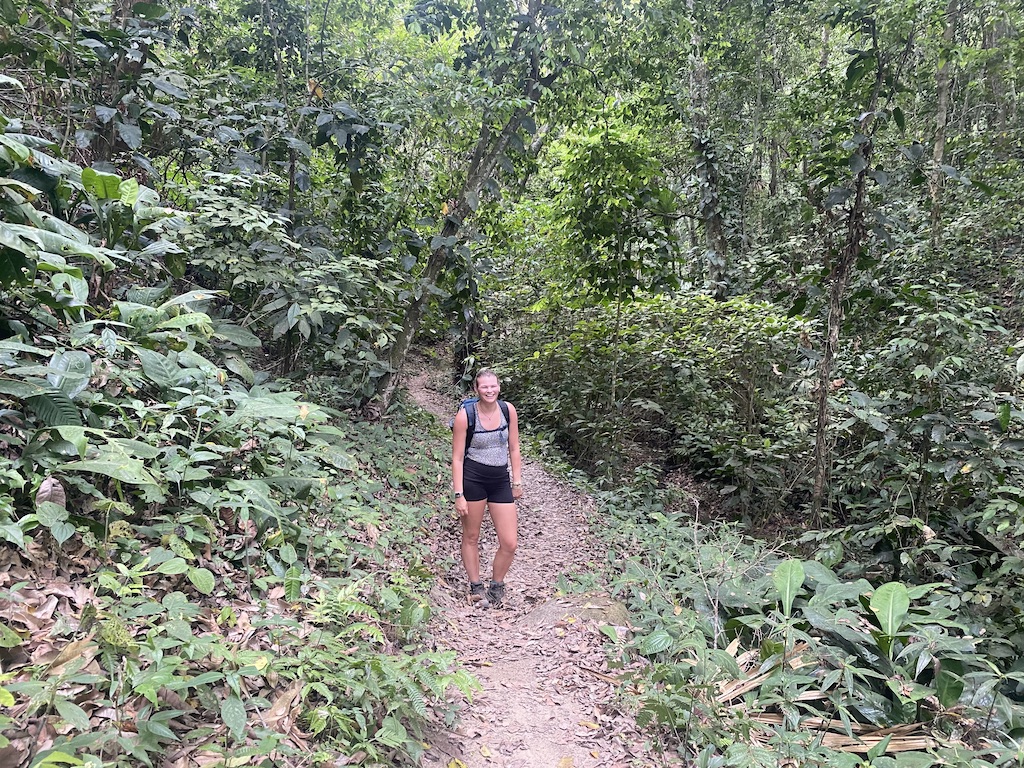
How does Tayrona National Park rate as a destination?
As part of this blog, I give every place I visit a rating so that we can easily compare destinations and decide whether they’re worth a visit – those are the ratings you see at the top of the page!
This is how Tayrona National Park rated:
- Accessibility: 2/5 – Tayrona National Park isn’t easy to access compared to other places. The footpaths aren’t suitable for disabled people and a few nights here can feel complicated to organise.
- Safety: 4/5 – the park feels super safe and there is a medical team present at Cabo San Juan in case of any problems. This is the jungle though, so some dangerous animals may be present.
- Enjoyment: 4/5 – we liked Tayrona and really enjoyed our time there. The only thing is how busy it is; even in the off season when we visited, it got pretty hectic at Cabo. In high season this would be even more annoying.
- Value: 3/5 – compared to other destinations along this stretch of coast, Tayrona is quite expensive. There’s also a hefty fee to enter the park.
Overall score: 3.25/5
If you’ve already visited, let me know if you agree with these ratings! Just to note, the ratings are my personal opinion based on my visit, so you might have a completely different experience.
Need more information on the ratings? Check out my guide to how I rate destinations.
Tayrona’s beaches
Tayrona National Park is home to plenty of beaches, all of which are worth exploring. These include:
- Cañaveral
- Arrecifes
- Arenilla
- La Piscina
- Cabo San Juan de Guia
- Boca del Saco
- Nudist beach
- Playa Brava
I’ve written more about Tayrona’s many beaches in a separate guide, so take a look if you want more information about these.
I’ve included a photo of the map that was shown at the El Zaino entrance, so you can get an idea of the geography of the park.

Route through Tayrona National Park
So, given the range of beaches and options, how should you visit? Here are my suggestions for one to three day itineraries:
One day
- Enter through El Zaino, and take the shuttle from the entrance to the trailhead. I’d suggest arriving early (around 8 am) to maximise your time in the park.
- Leisurely walk to Cabo San Juan, stopping at all the beaches on the way. The walk should take around 2 hours.
- Once you’re finished, walk back to the trailhead. As the walk should take 2 hours, make sure you leave yourself enough time to arrive before dark – set off from Cabo San Juan around 3 pm.
- Take the shuttle to El Zaino and exit the park.
Two days (one night)
You have two options. The first is to enter and exit through El Zaino:
- Enter through El Zaino, and take the shuttle from the entrance to the trailhead.
- Leisurely walk to Cabo San Juan, stopping at all the beaches on the way. The walk should take around 2 hours.
- Stop for the night at a campsite near Cabo San Juan or Arrecifes.
- Spend the morning of your second day at your beach of choice. Cabo San Juan is quietest in early morning or late afternoon so it’s worth making the most of this time.
- Walk back to the trailhead, take the shuttle back to El Zaino, and exit the park.
An alternative route is to enter through Calabazo and exit through El Zaino:
- Enter through Calabazo, and take a mototaxi until the end of the road. If none are available, you’re walking!
- Follow the signs to Cabo San Juan. The journey should take around 3 hours if you walk it all.
- Chill at Cabo San Juan in the afternoon.
- Stop for the night at a campsite near Cabo San Juan or Arrecifes.
- The second day, walk leisurely through the park in an easterly direction, stopping at the beaches on the way.
- Once you reach the trailhead, take the shuttle to El Zaino and exit the park.
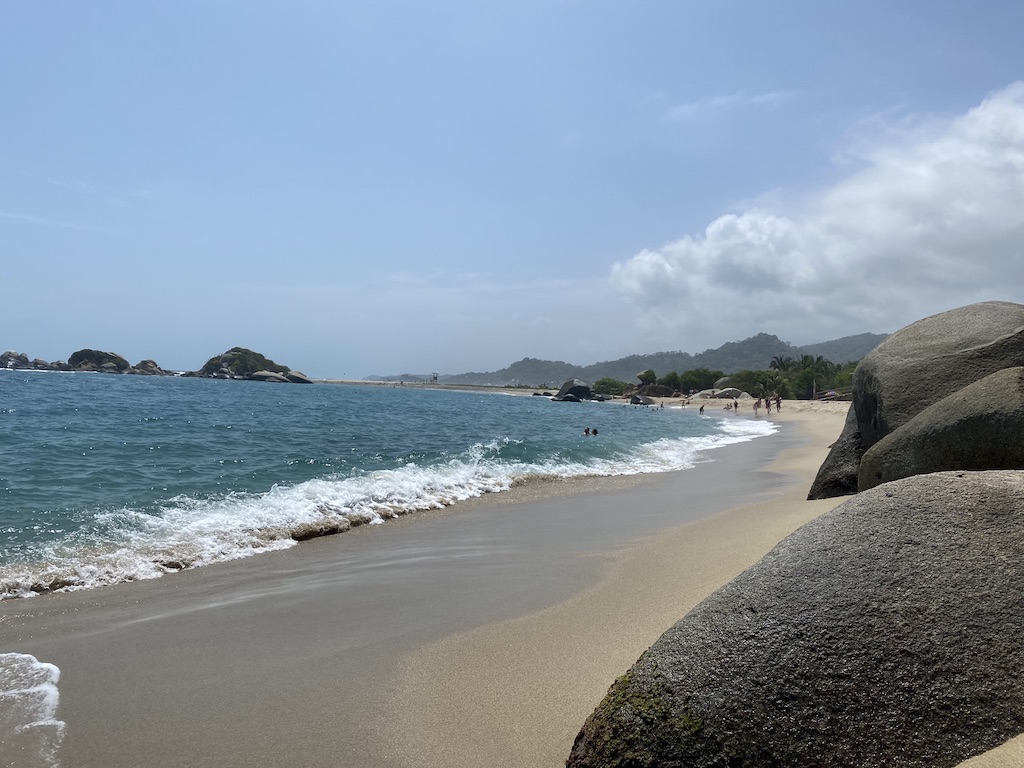
Three days (two nights)
An extra night gives you opportunity to explore Playa Brava in addition to the main route from El Zaino.
- Enter through Calabazo.
- Hike to Playa Brava and spend your first night here. It’s around 3 hours hiking, so it’s worth setting off early morning to maximise your time relaxing.
- On your second day, hike to Cabo San Juan and relax here and on the nearby beaches. It takes around 3 hours of hiking to reach Cabo San Juan from Playa Brava.
- On your third day, walk leisurely through the park in an easterly direction, stopping at the beaches on the way. There should be around 2 hours of walking time.
- Once you reach the trailhead, take the shuttle to El Zaino and exit the park.
Which direction should you walk in?
You might want to enter and exit through different entrances. If so, the grand question is: should you enter through Calabazo and exit through El Zaino, or enter through El Zaino and exit through Calabazo?
I wholeheartedly recommend entering through Calabazo. We did it the opposite direction, entering through El Zaino, and it was a massive regret.
The trailhead at El Zaino is located at sea level, whilst Calabazo is at several hundred metres above sea level. Therefore, if you enter at El Zaino, you have a couple hundred metres’ climb to make as you leave Cabo San Juan. Let me tell you, this climb is so painful!
On the other hand, if you enter through Calabazo, aside from the first 60 mins, the walk is mostly downhill. Also, mototaxis are waiting at the entrance so can give you a lift for the first hour or so of walking; there is no option for this if you walk in the other direction.
We also found signposting was better in the opposite direction as the turn to Playa Brava isn’t massively obvious.
Don’t be like us: start at Calabazo!
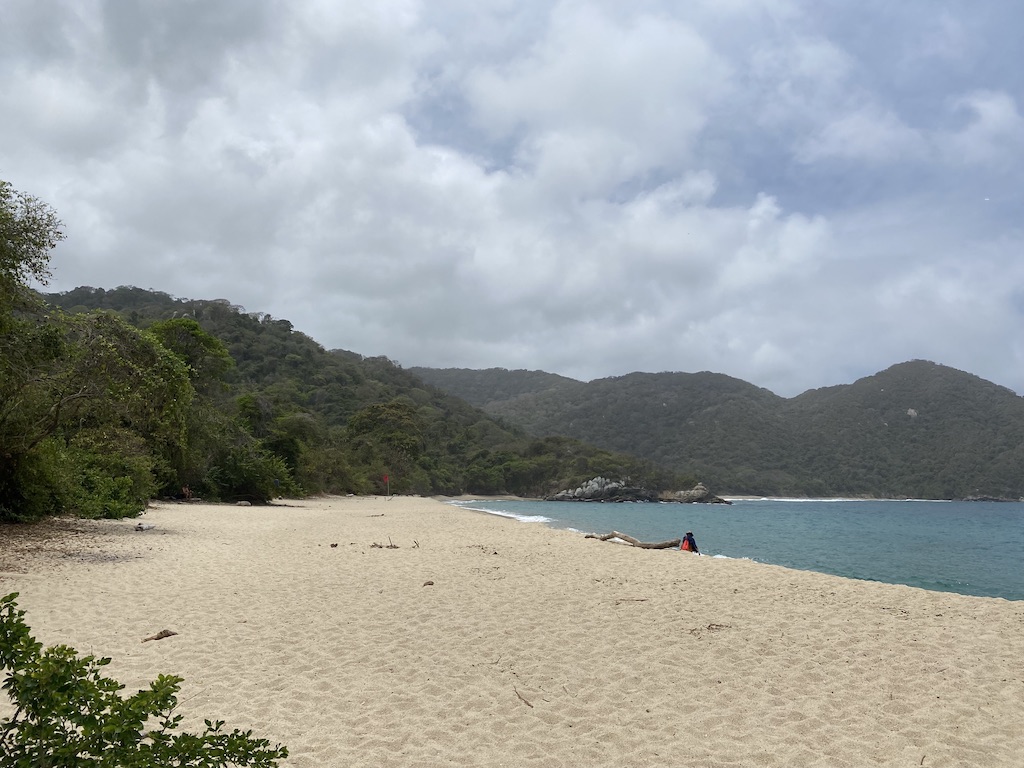
Where should you stay before and after visiting?
The entrances to Tayrona National Park are on the road which connects Santa Marta to other destinations in the area, like Palomino. That makes it a great stop off if you’re transiting between these destinations.
However, you’ll probably need to find a place to store all your luggage whilst you’re hiking. It’s knackering enough without having to hike with your giant rucksack or wheeling a suitcase! Therefore, you need to store your luggage somewhere you’re going to return to.
If you are staying in Santa Marta (or another destination) before and after your visit, great! You can leave your things there. If you are changing location, however, I would suggest staying the night after your visit in a hotel outside one of the park entrances. That way, you can drop your stuff off before you enter the park. Once you’ve left the park you’ll then be able to pick it up, rest overnight, and leave the next day. This is what we did and it worked really well!
Is it worth visiting Playa Brava?
Some of you reading this may be wondering whether it’s worth visiting Playa Brava, the most remote beach in this area of the park. After all, compared to the other beaches, getting to Playa Brava is a faff. It’s located around a 3 hour hike from both the Capabazo entrance and Cabo San Juan – and, let me tell you, hike is the operative word in this sentence! The walk to Playa Brava is intense and knackering, with around 300 m of elevation gain in one hour of walking as you approach the beach.
Seriously – the walk is similar in intensity to the Lost City trek. I’d only recommend attempting to visit it if you are fit and determined.
However, Playa Brava is gorgeous and so much quieter than the other beaches. We loved the vibe here; it felt like Colombia’s version of Cornwall. Plus, as the footpath there is less busy, we saw a lot more wildlife, including a snake and a group of monkeys.
Overall, I’d say it’s well worth a visit if you have the time and energy. If you have more time, I’d go so far as to suggest you stay two nights to break up the walking.
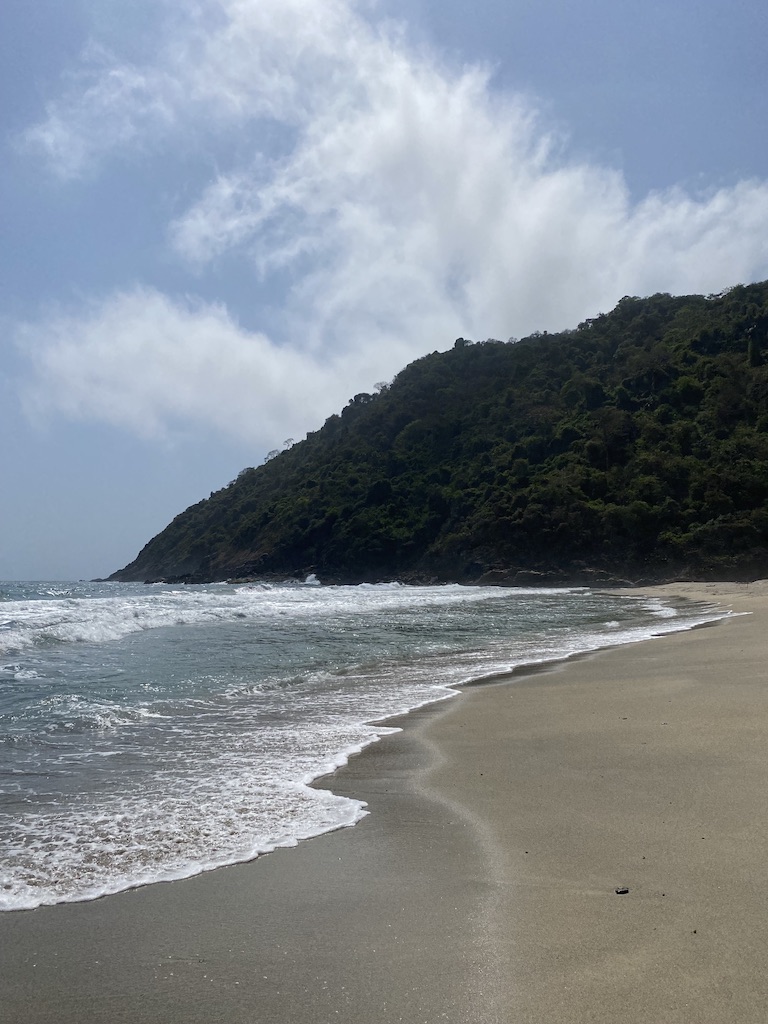
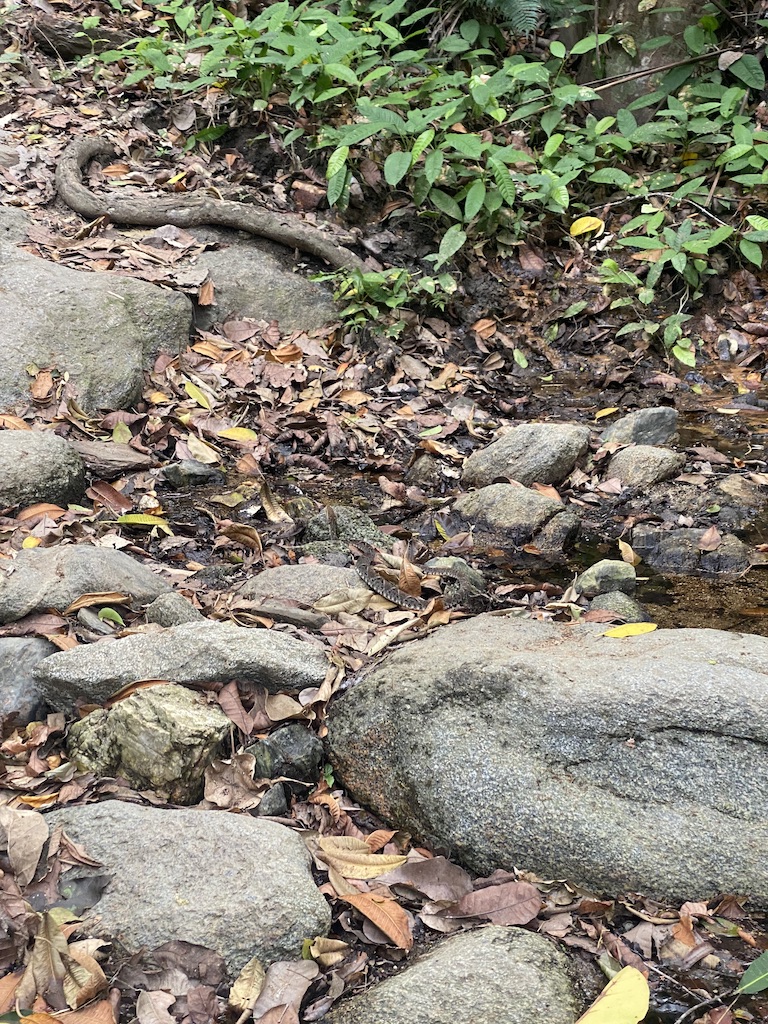
How to get to the park entrances
It is easy to get to Tayrona by public transport, as its entrances are on the main road from Santa Marta to Palomino. Therefore, as long as you get on a bus heading from one of these places to the other, the bus will pass by the park.
Buses are super regular (at least every 30 minutes). It cost us 7,000 COP ($1.80 / £1.40) each to go from Palomino to El Zaino and 7,000 COP again to go from El Zaino to Santa Marta. Expect a journey time of around 90 minutes in either direction.
In Santa Marta, buses leave at the corner of Calle 11 and Carrera 9, outside the public market. Just follow the directions to “Bus Parque Tayrona” on Google Maps! It should take around 15 minutes to walk to the bus stop from the tourist centre of Santa Marta. Make sure to be careful with your belongings on the walk, as you do have to walk through a market and there’s a risk of pickpockets.
In Palomino, buses leave from the main road. Just ask to be dropped off at the entrance to Tayrona – make sure to specify El Zaino or Calabazo.
You can also take a boat to Cabo San Juan from Taganga, around 15 minutes’ drive from Santa Marta.
Accommodation in Tayrona National Park
Getting accommodation in Tayrona is a bit faffy compared to other destinations. But don’t worry: I’m here to help!
You have two main options within Tayrona itself: campsites and ecohabs. Some of these aren’t located on or near the main track, so check their location before you book.
Campsites: hammocks
The cheapest and most plentiful option is to stay at campsites. You have two main options again: hammocks and tents.
Hammocks are exactly what they say on the tin. You get a hammock in a communal area, plus a mosquito net. Some will also provide a blanket.
We chose a hammock – they’re cheap and plentiful, and as there are so many it’s unlikely they will sell out on any given night. The only thing is I never could get entirely comfortable, plus they can get dewy at night.
We stayed at Camping Don Pedro the first night; it’s about a 10 minute walk from Arrecifes in the jungle, meaning it felt warmer than the campsites by the coast. They provide lockers for your valuables for free, which we thought was a nice touch.
The second night, we stayed at Playa Brava Teyumakke, which is the only accommodation at Playa Brava. They’re not a campsite and just have hammocks and ecohabs. The hammocks are right by the beach – it was so dreamy to sleep hearing the waves and wake up with the ocean! They don’t have lockers available, but fortunately Playa Brava feels much quieter and more secure than the other beaches in Tayrona.
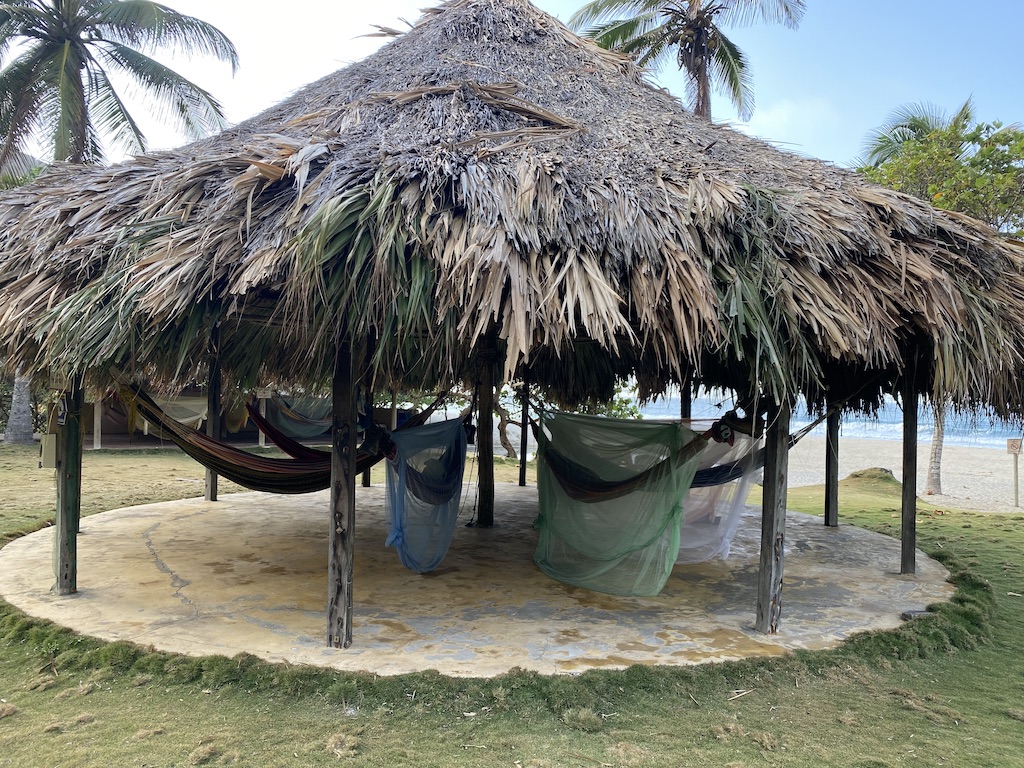
Campsites: tents
Most of the campsites also contain tents, which can be rented for the night. These come with mattresses and bedding.
Bloggers out there seem to be mixed on the tents and whether they’re worth the extra expense. I can’t say for sure either way as I didn’t try them!
It’s definitely worth considering though if you’re travelling as a couple or want your privacy. Surely it can’t be less comfortable than the hammocks…?
If you’ve got your own tent and bedding, it’s also possible to rent a pitch at some of the campsites.
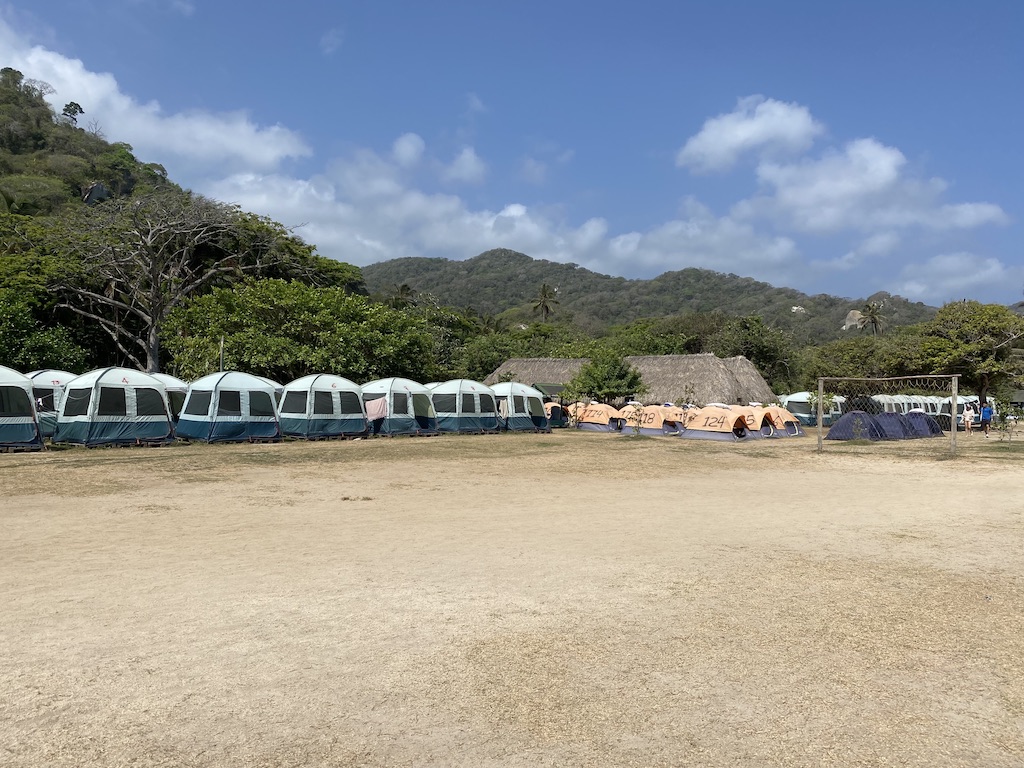
Cabins
Across Tayrona National Park, you’ll find cabins – these are huts or similar which you can rent for the night.
As you’d expect, these command a premium compared to the campsites. But this accommodation is much nicer and more private than other options, so it’s great if you don’t want to rough it.
In particular, the cabins at Playa Brava Teyumakke looked great. I was so jealous of everyone who was renting one of these. They were right next to the beach and had their own hammocks too.
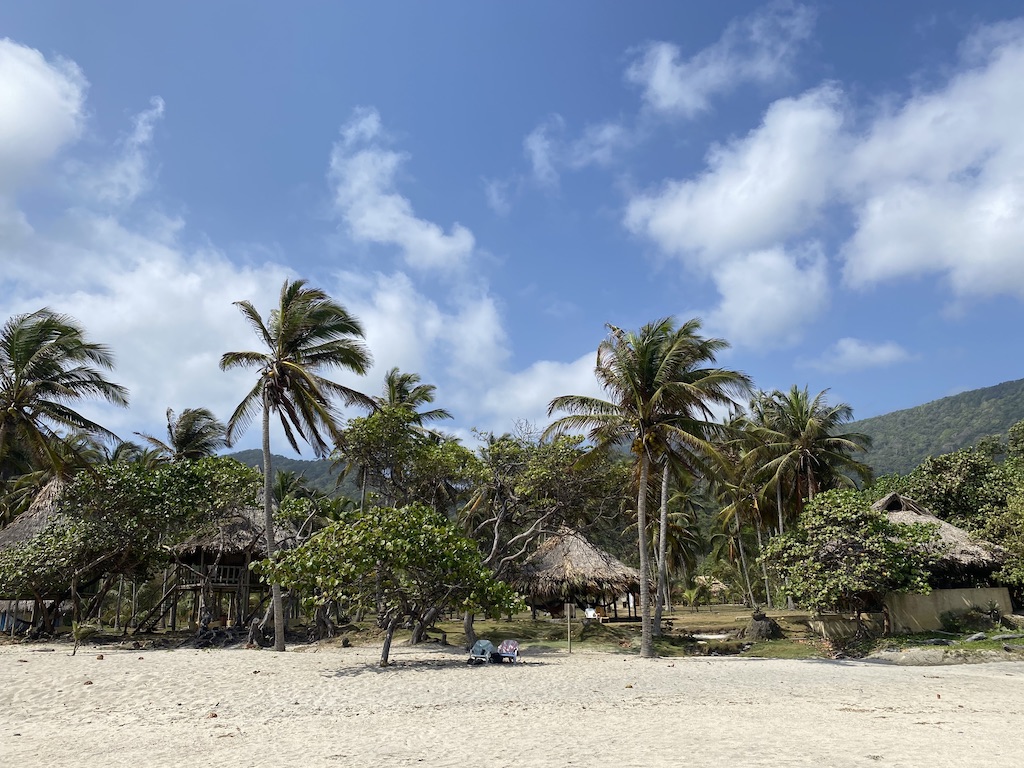
Accommodation outside Tayrona National Park
You’ll also find accommodation outside the park, between the El Zaino and Calabazo entrances. This is perfect for you if you want to sleep in a hotel and only want to come into Tayrona for the day.
We stayed at Recuerdos de Tayrona, a hotel five minutes’ walk from the El Zaino entrance. Their rooms are super comfortable and have amazing air con; plus they have a pool.
A positive about staying outside the park as opposed to travelling in from elsewhere is that you still have the jungle at your fingertips. It’s not like the monkeys, lizards and butterflies know the boundary to the protected area; you can still see them from the comfort of your hotel room, should they decide to come!
Also, it means you can get to Tayrona super early, maximising your time in the park and minimising queue lengths.
How to book accommodation
Hotels outside Tayrona and many of the cabins within the park can be booked online. Make sure to book early for any cabins within the park, as they are likely to sell out.
Tents and hammocks are a bit less easily booked. Some of the campsites (generally the most expensive!) can be booked online.
However, for many of the campsites you can message them on WhatsApp to book. This is what we did. It gives you peace of mind and confirms you’ve got accommodation, plus you know exactly how much your hammock or tent will cost.
Hammocks and tents can also be booked at several campsites from stands outside El Zaino Entrance. This includes Camping Don Pedro and Cabo San Juan.
Personally, I’d recommend reserving your accommodation online or by WhatsApp in advance. It saved us a lot of stress and meant we could plan out our trip without any unknowns!
Do you need to bring your passport and yellow fever vaccination certificate?
Bring your passport. Our passport was checked when we entered the park, so this is likely to be needed for you to enter too.
One concern I had before entering was that we’d need to show our yellow fever vaccination certificate. I’d read online that Colombia does require this for national parks in the Magdalena region as there is a risk of yellow fever transmission, and that this could be asked for when entering. We’d forgotten ours and left them back in the UK, so I was concerned we might be turned away.
However, no such request was made anywhere in Colombia! It looks like I was worried for nothing. It’s unclear how many places – if any – actually ask you for a yellow fever vaccination certificate in practice.
The official website for Tayona National Park recommends you are vaccinated against yellow fever but does not mandate it to enter the park. Therefore, I think you aren’t required to show your certificate. However, just to be sure, if you do have one, I’d bring it with you.
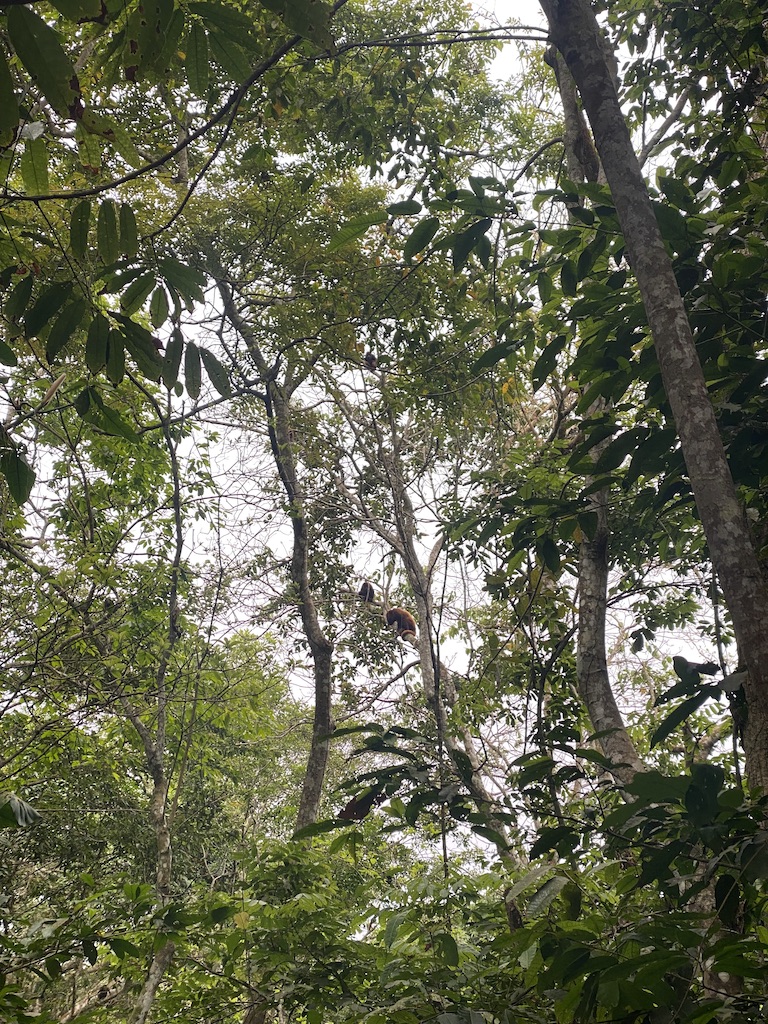
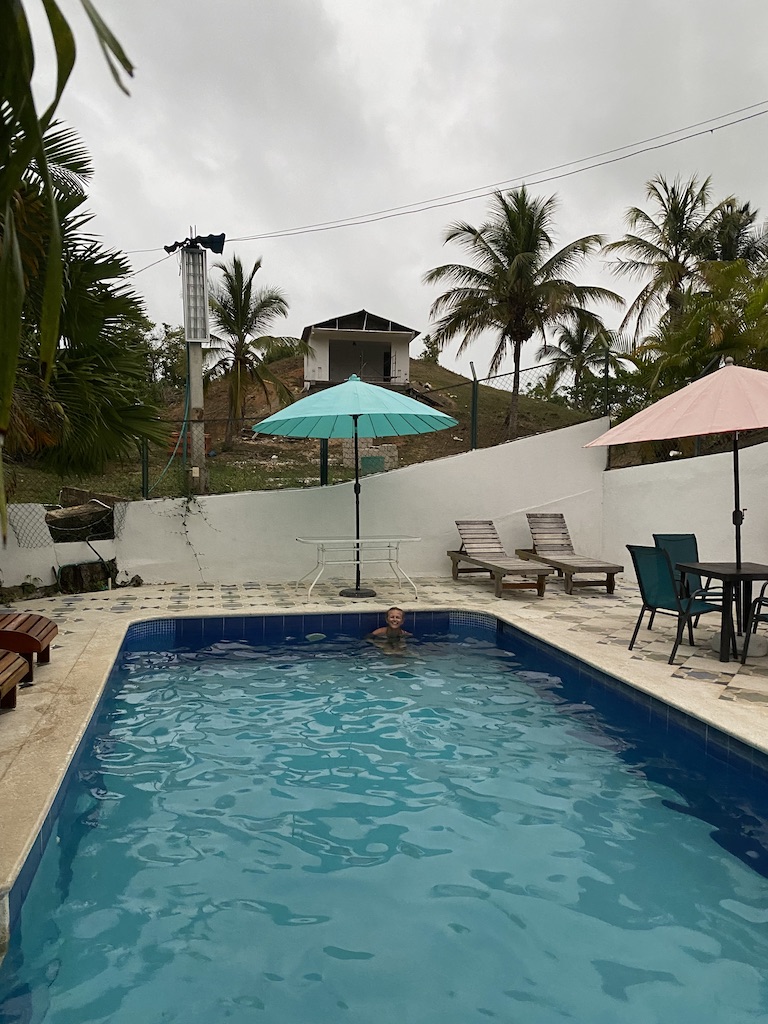
Tips
If you are planning on visiting, here are my top tips:
- Bring water and suncream. We didn’t see a lot of water on sale, and this is one thing you don’t want to run out of. For multi-day trips a water filter would be your best friend here! We also ran out of suncream during our visit and found it impossible to replace.
- Bring snacks. Most campsites have their own shop selling drinks and snacks, but these tend to be limited and expensive. Therefore, bring your own.
- Book well in advance for non-tent accommodation. Ecohabs are available in the park – those at Playa Brava looked beautiful in particular. However, they will be booked out in advance, so make sure to reserve them early if you want them!
- Prepare to wild wee. We only saw one set of (expensive) public loos during our visit…
- Bring enough cash. For almost everything in Tayrona you’ll have to pay in cash. Even if you manage to find somewhere that accepts card, they will almost certainly apply an additional fee. Make sure to bring plenty of cash into the park.
- Be careful with your footing. Lou nearly stepped on a venomous snake when we were walking to Playa Brava. Particularly when walking on less established footpaths, check ahead of you before you step!
- Check when it’s open. Over particular periods of the year the park closes at the request of the indigenous community which inhabits the land. Make sure this does not affect your trip before you head to the park.
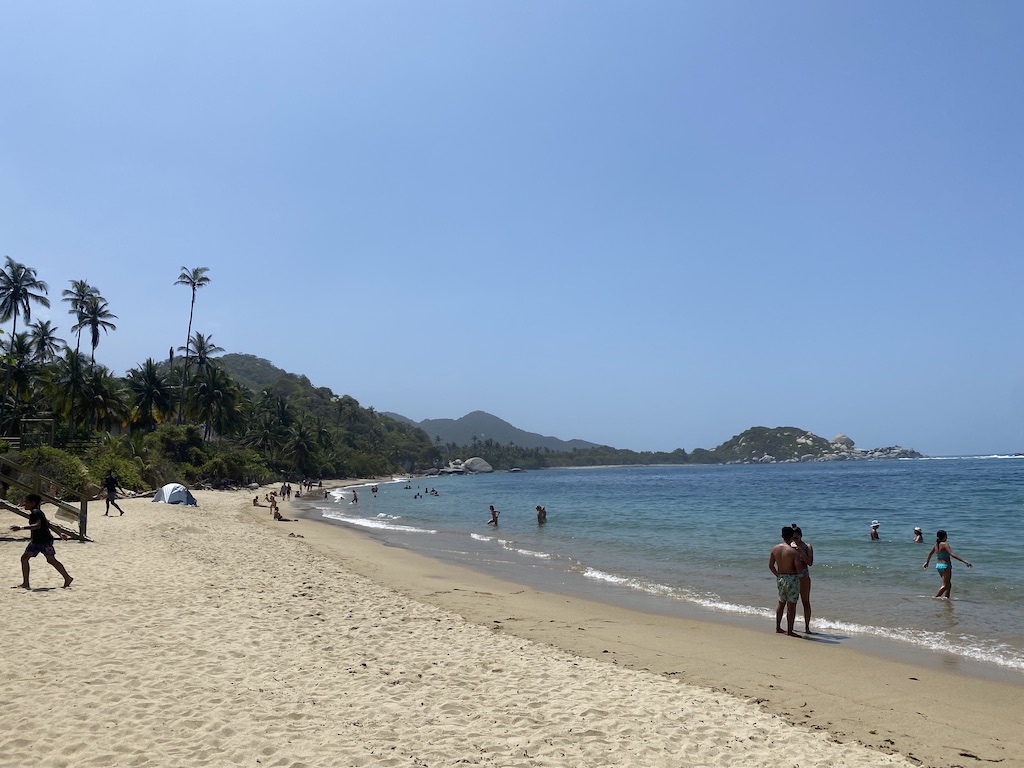
Conclusion
Tayrona National Park, on Colombia’s Caribbean coast, is well worth a visit. Its pretty beaches do take a bit of effort to reach, but you won’t regret it!
I hope this information helps you to plan your visit. Let me know if you have any questions!
More information
- Head to the official website for official information on pricing, opening times and important information.
- Free to Roam’s walk through Tayrona National Park from the Calabazo entrance is worth a read if you’re considering entering from here. They also include further information on the beaches en route.
- Kiona x Coffee gives a good round up of the two night, three day walk including Playa Brava.
- Check out People Are Culture for more information about the Kogi people inhabiting the park – a super interesting article!
- Along Dusty Road’s guide to Tayrona National Park is super detailed and their FAQ format is so handy for finding out exactly what you want to know.
- Destinationless Travel’s article on Tayrona National Park is super informative as well, particularly for getting more information on accommodation options.

